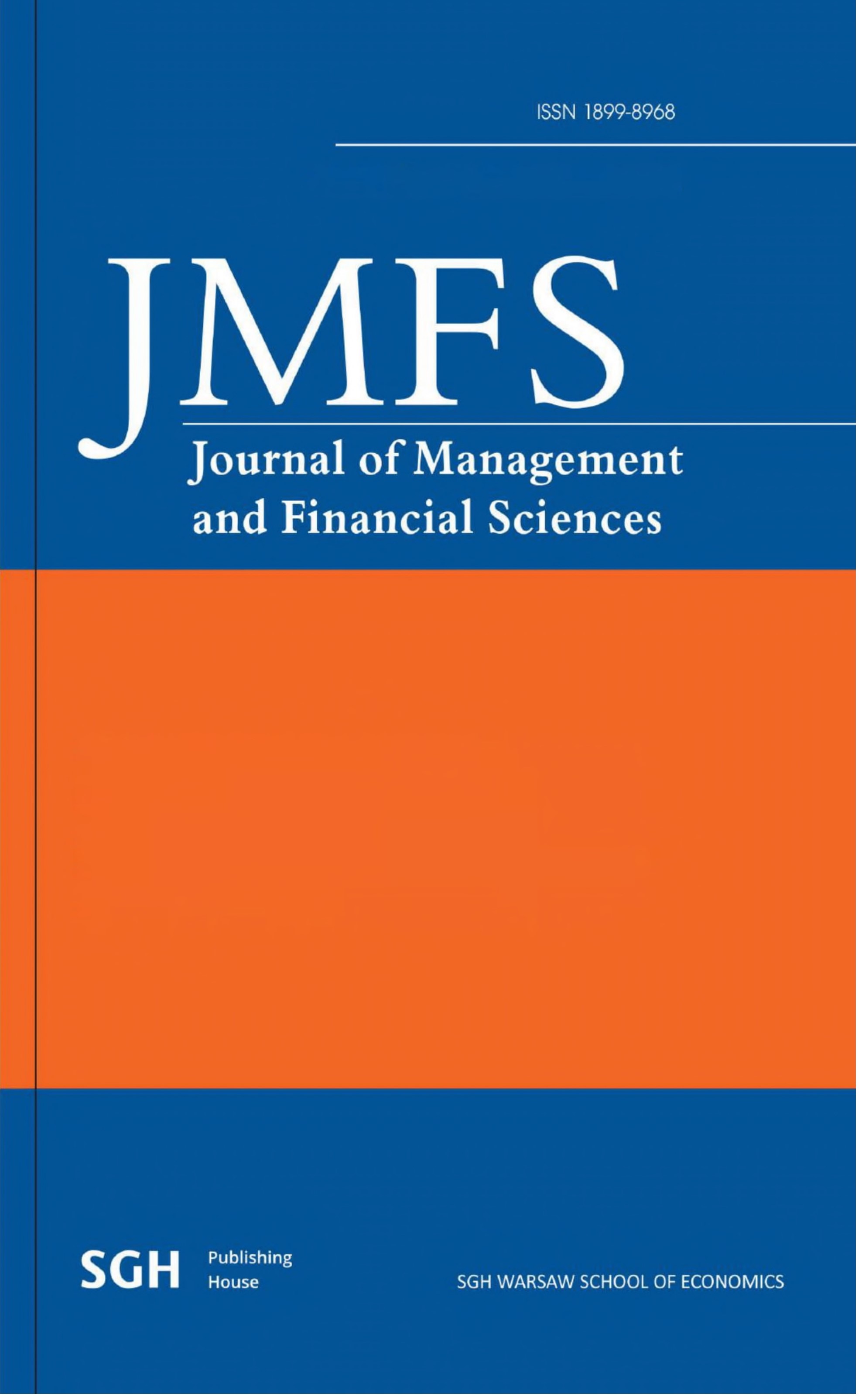Dear Reader,
We present you with the 42nd edition of the Journal of Management and Financial Sciences. This edition contains important and current issues about social budget and shadow economy performance, optimal financial structure of FDI inflows to Poland for stimulating growth processes and Hurst exponents calculated with the use of the Siroky method.
We hope that its content will make a valid contribution to the development of economic thought and lead to a deeper understanding of complex issues discussed in it.
The aim of the study in the first article by Andrzej Buszko and Jarosław Skorwider-Namiotko was to investigate the dependence between social budget spending and shadow economy performance. Shadow economy exists in any economy, having a substantial impact on legal economy. It can be conducted separately, but most often it brings about significant consequences to the economic order. Therefore, it is very important to identify the relationships among factors fostering shadow economy. The universal roots of shadow economy are generally recognised, but there is still a considerable area left to be explored. Based upon the results, it can be concluded that close attention should be paid to tax effectiveness and its relationship with shadow economy performance.
The article by Aneta Kosztowniak aims to answer a question what should the optimal financial structure of FDI inflows to Poland be to stimulate growth processes. The study on the dependence between financial components of FDI inflows and GDP for Poland covers the period 2004: Q1–2019: Q4. The results of the VAR/VECM model and forecast error variance decomposition indicated that in the optimal (growth-enhancing) structure of FDI inflows the share of equities and the reinvestment of earnings should be maximised.
The next paper by Krzysztof Borowski and Michal Matusewicz analyses Hurst exponents calculated with the use of the Siroky method in two time intervals of 625 and 1250 sessions for the group of 570 financial instruments (Warsaw Stock Exchange equities – 320, equity indexes – 7, commodities – 41 and the FX market – 135). The study also covers an analysis of the normality of the distribution of logarithmic rates of return, and the verification of statistical hypotheses with the use of the following statistical tests: Jarque-Bera (JB), Shapiro-Wilk (SW) and d’Agostino-Pearson (DA).
The main conclusion that was drawn from the research may be formulated as follows: the value of the H exponents decreased in the analysed time windows, which means an increase in the fractal dimension (d), and thus the investment risk on financial markets. The obtained results can be used in the process of constructing an investment portfolio in financial markets.
The research is part of the ongoing discussion on the effectiveness of financial markets.
We wish you a pleasant reading.
Ryszard Bartkowiak,
Chairman of the Scientific Council
Published: 2021-12-28
